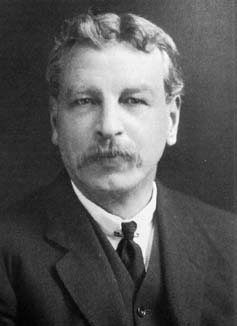


 تاريخ الرياضيات
تاريخ الرياضيات
 الرياضيات في الحضارات المختلفة
الرياضيات في الحضارات المختلفة 
 الرياضيات المتقطعة
الرياضيات المتقطعة
 الجبر
الجبر
 الهندسة
الهندسة 
 المعادلات التفاضلية و التكاملية
المعادلات التفاضلية و التكاملية 
 التحليل
التحليل
 علماء الرياضيات
علماء الرياضيات |
Read More
Date: 2-4-2017
Date: 9-4-2017
Date: 6-4-2017
|
Died: 20 February 1955 in Sandgate, Kent, England

Arthur Lee Dixon was the second son of the Rev George Thomas Dixon (born in Brigg, Lincolnshire about 1838), who was the Wesleyan Minister of Northallerton. His mother was Ellen Cardew (born in Alford, Lincolnshire about 1842) and he was the younger brother of Alfred Cardew Dixon. Arthur was educated at Kingswood School in Bath which he attended from 1879 to 1885. This school was a Methodist school founded by Wesley, the founder of Methodism. After leaving Kingswood School Arthur Dixon entered Worcester College, Oxford, where he studied mathematics, graduating in 1889.
Arthur Dixon won a prize fellowship to Merton College, Oxford, where he was appointed in 1891. Merton College was one of the Oxford Colleges with a strong historical mathematical connection, since the first school of mathematics there was organised by Thomas Bradwardine in the middle of the 14th Century.
He was elected to a further fellowship when he became Tutorial Fellow in 1898, and four years later, in 1902, he married Catherine Rieder in Paris. However Dixon experienced problems due to his wife's health:-
The climate of Oxford proved disastrous to Mrs Dixon's health and she was compelled to spend much of her married life outside Oxford, in Pau and elsewhere. [Pau is a town in the Pyrénées, in southwest France.]
Dixon's fellowship allowed him to remain at Merton College until he was appointed to the Savilian chair of pure mathematics in Oxford in 1922. Arthur and Catherine Dixon had one daughter and after Catherine's death in 1930, Dixon made his home with his daughter who by this time was married to F J Baden Fuller and living in Sandgate, Kent. He continued to hold the Savilian chair of pure mathematics at Oxford until he retired in 1945.
Arthur Dixon always said that the biggest influences on his study of mathematics were Elliott, who inspired his particular line of research, and C L Dodgson who he once met. His mathematics, very much in the English tradition of Cayley, studied applications of algebra to geometry, elliptic functions and hyperelliptic functions.
In 1908 Dixon began a series of publications on algebraic eliminants, carrying the subject forward from the point where Cayley had left it. He also published a number of papers on the cubic surface, studying lines on the surface, and other topics such as the Schur quadric. In the latter part of his career, Dixon published a series of around twelve joint papers with W L Ferrar on analytic number theory, summation formulae, Bessel functions and other topics in analysis.
In 1912 Arthur Dixon was honoured by being elected a Fellow of the Royal Society. He was also a strong supporter of the London Mathematical Society, serving as its President in 1924-26. His younger brother, Alfred Cardew Dixon, would hold this same office five years later.
Arthur Dixon shared with Elliott, who had inspired him, an old-fashioned approach to mathematics. Chaundy, writing in [2], describes Dixon's feelings on this as follows:-
He had no great sympathy with much of the mathematics now in vogue. Matrices, he agreed, meant something; but so often in modern writing, when one had mastered a notation and terminology that were unfamiliar (and you suspected, repellent), one discovered it was something one had known all along.
Dixon had many talents in addition to his mathematical ones. He was a great sportsman who played hockey, tennis, squash and croquet. Another side of this many talented man was his skills as a linguist and his great musical talents (he played the flute in a local orchestra).
Chaundy, in [2], describes Dixon's character:-
He was a man of the sunniest disposition, radiating bonhomie, welcome in every company and with a wide circle of friends. He was gentle in manner, somewhat reserved in speech, with a quiescence that was never to be thought inertia.
In [1] he is described as:-
... essentially a man of peace, loathing all quarrels. When conflicts of a personal character threatened to arise between colleagues he would shrink into silence; even in disputes of a mathematical nature he was reluctant to take part, though (as one learnt privately) he held clear and definite views on many of them. ... He was a genial personality, but with a certain oracular reserve. In mathematics he strove to preserve something of what seemed a more staid and sober tradition ...
Articles:



|
|
|
|
علامات بسيطة في جسدك قد تنذر بمرض "قاتل"
|
|
|
|
|
|
|
أول صور ثلاثية الأبعاد للغدة الزعترية البشرية
|
|
|
|
|
|
|
مكتبة أمّ البنين النسويّة تصدر العدد 212 من مجلّة رياض الزهراء (عليها السلام)
|
|
|